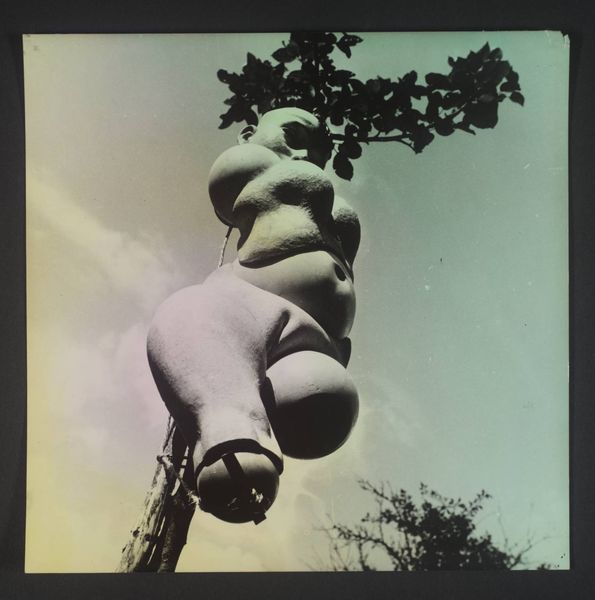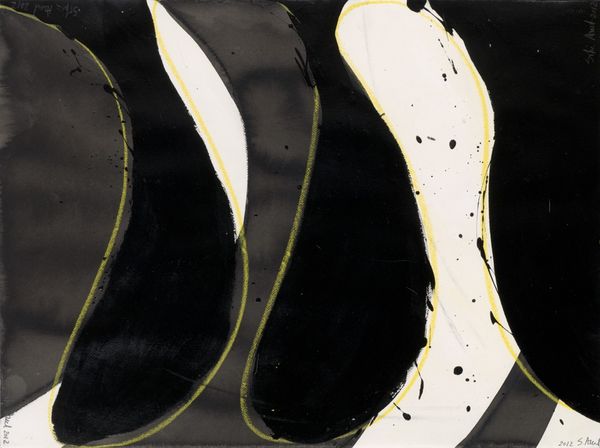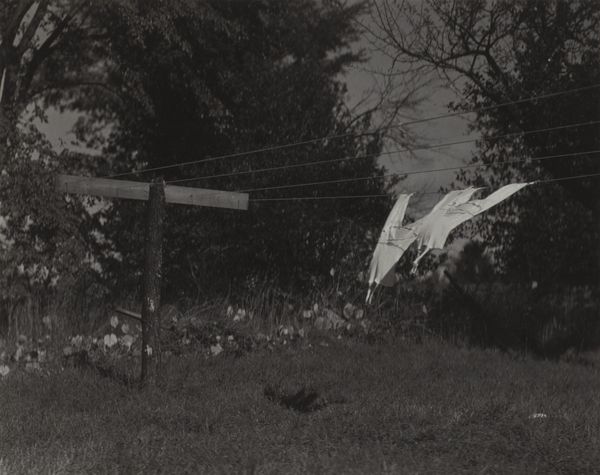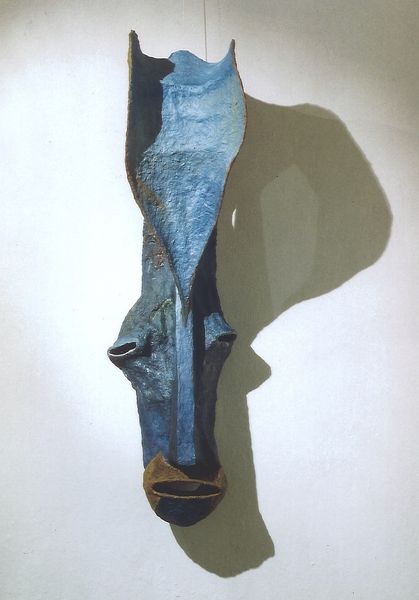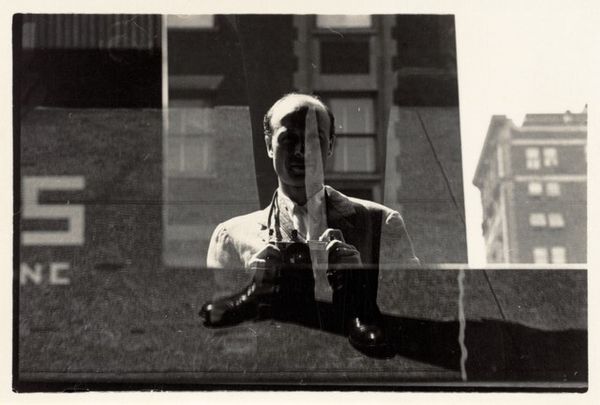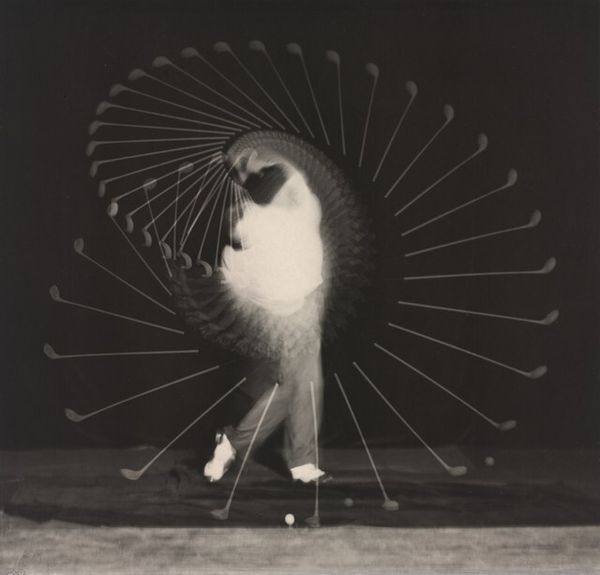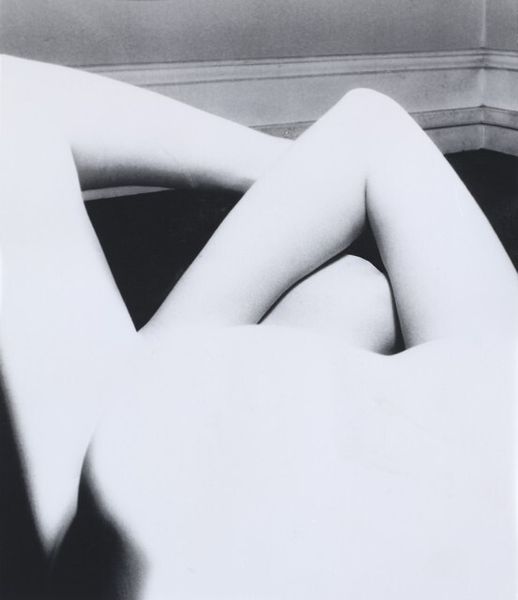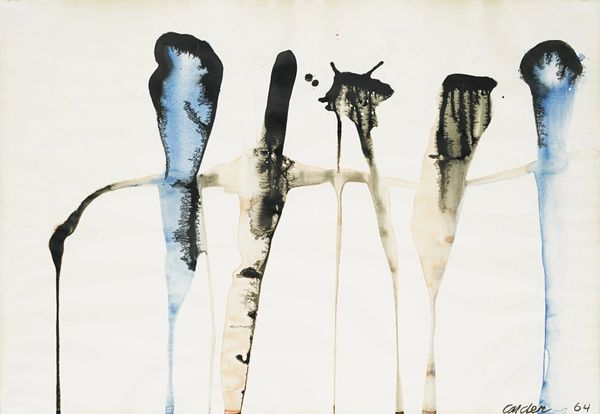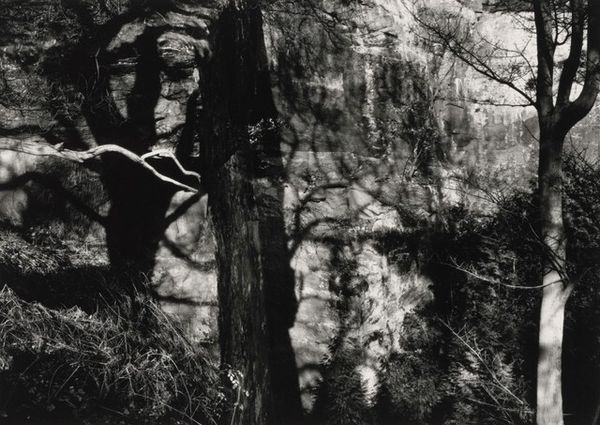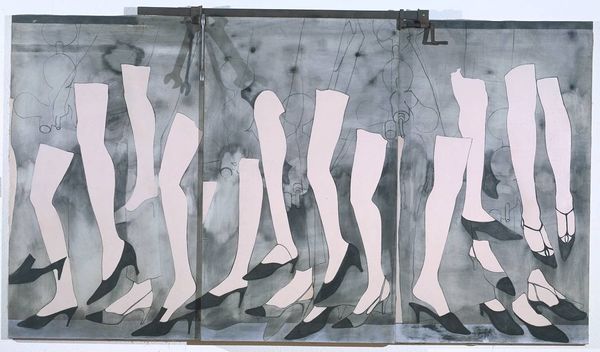
mixed-media, plein-air, photography
#
mixed-media
#
plein-air
#
landscape
#
abstract
#
photography
#
capitalist-realism
Copyright: Modern Artists: Artvee
Curator: Gerhard Richter's "UT" from 1992 presents us with a captivating mix of media. The landscape is partially obscured by streaks and daubs of black and white paint, sitting somewhere between abstraction and something almost photographic. Editor: Woah, my first thought? Ghostly! Those black and white marks, like tears, obscuring what seems like a normal park scene...gives me a seriously unsettling vibe, like a memory struggling to surface. Curator: Exactly, and understanding Richter's background helps unlock the weight this work carries. Born in Dresden during WWII, he witnessed immense trauma and destruction. "UT" hints at that history, the way memory and experience can deface or obscure reality. His mixed media approach merges styles and challenges our perception of truth. Editor: Mmh, I get what you mean...the familiar versus the obscured. For me, it speaks more broadly to censorship, or even the self-censorship we impose. Like editing out the painful parts of our own story. The landscape is ordinary—the black and white intrusion, well, that screams 'interruption.' Curator: The "plein-air" aspect further complicates this tension, right? It brings this sense of immediacy to his style but also underscores how these intrusions have become embedded in the landscape and in us. The photo becomes a site of ideological struggle. What gets remembered? What is erased? Editor: Definitely! The ordinary now becomes extraordinary and makes us reflect on everything in between. Plus, let’s be honest, that swipe of black almost obliterates the sign – a sign which could signify anything… a political stance, an instruction… it all becomes part of the artist’s dialogue. I love how it just pushes you to keep wondering... Curator: Absolutely, Richter pushes viewers to contend with these questions of history, representation, and subjectivity. It’s also tempting to link Richter's blurring effect to notions of collective trauma, or repression, that continue to inform social and political debates today. Editor: And that's the beauty, isn't it? It can hold so many narratives. For me, “UT” lingers less as a historical document and more like an emotional aftershock – the landscape trembles, forever haunted by what's been concealed. Thanks for sharing this. Curator: Thanks for those thoughtful, incisive, insights, truly fascinating how an artwork created decades ago resonates in so many new ways.
Comments
No comments
Be the first to comment and join the conversation on the ultimate creative platform.

